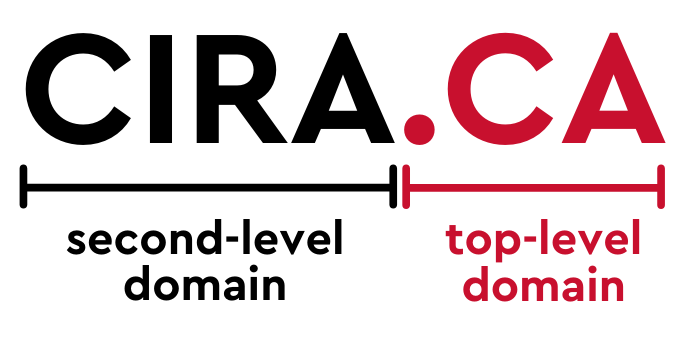It’s easy for internet users to take domain names for granted. After all, they are present just about everywhere these days: on billboards, in commercials, in podcasts. Many people probably don’t think of them as much more than someone’s street address on the internet. But, there’s actually quite a bit of information packed into a tiny domain name.
CIRA’s 2018 report, Canadians deserve a better internet, found that 70 per cent of Canadians are concerned that fake news could impact the outcome of the next federal election, and during political campaigns tactics involving domain names can make the headlines. For example, during the 2016 U.S. presidential cycle, jebbush.com redirected to a website about Donald Trump.
A key aspect of fighting fake news is scrutinizing the source of information you read online. If you visit a website that seems like it has a misleading domain name, understanding how domains are registered can help. With the 2019 Canadian federal election quickly approaching, we would like to educate Canadians on a few key points on domain name registrations.
1. Domain names made of two key components.
The top-level domain, or TLD for short, is the section that comes after the dot. The second-level domain is the part of the domain that comes immediately before (or to the left) of the dot.

2. Some top-level domains are affiliated with countries
These are called country code top-level domains (ccTLDs), like .CA for Canada. However, some countries have opened up their ccTLD for anyone to register (such as .co which is assigned to Colombia)
3. In Canada, only those that meet CIRA’s Canadian Presence Requirements are permitted to register a .CA domain name.
Short version: you have to be Canadian or have a Canadian presence to get one.
4. Individuals that are in the public eye are encouraged to be proactive and register their personal domain, even if they don’t plan on building a website.
Even if you’re not famous (or not famous yet), registering your personal domain is a good for protecting your personal brand.
5. A .CA domain can be registered for one to ten years at a time and some registrars (a company that you purchase and register the domain name from) offer an auto-renew feature.
Failing or forgetting to renew your domain registration means releasing it and risking someone else scooping it up.
6. If you’d like to learn more about a particular .CA domain name, you can do a WHOIS lookup.
This will show you when the domain was created, when it expires and in some cases, contact information of the registrant (the person who registered it).
7. CIRA provides free WHOIS privacy protection for anyone who registers a .CA domain name as an individual.
This provides individual Canadians with automatic protection for their personal information. If a non-individual registers a .CA domain name (a business or organization), they have the option to pay for privacy protection services from a registrar which would redact their contact information from WHOIS.
8. Redirecting a domain, also known as domain forwarding, is usually just a matter of checking a box to enable the redirect and pasting the destination link.
It’s used for purposes like capturing traffic from common domain misspellings in a business’ domain portfolio or forwarding a personal domain name to a social media profile. Sometimes it is used as a “clever” tactic during a campaign.
9. Domain names that are in general availability are inexpensive, as low as a few dollars for the first year.
If someone is trying to obtain a domain name that is already registered, they have to do so through a domain name aftermarket, driving up prices.
10. Domain names are typically available for registration on a first come, first served basis and CIRA has no way to determine whether a particular person or party has the rights to a particular domain name.
If a bad faith registration is suspected, the CIRA Dispute Resolution Policy (CDRP) may be a mechanism in certain unique circumstances through which individuals can seek a resolution.
While we learn every day about new ways that bad actors are using the internet – misinformation, political manipulation, invasions of privacy – it’s still an amazing place. An open internet powered by tools like .CA have given more people than ever before the opportunity to establish their personal brand, launch a business, or stay in touch with friends and family. The open web has flipped things upside down and changed the rules for what is possible.
But with this opportunity comes a responsibility to make sure we are using technology responsibly. As the stewards of the .CA domain, we hope that the info above has given you a bit more information about how domain names work, and equipped you with new tools for detecting misinformation or other deception online.
Erin brings to CIRA a background of marketing experience in higher education and the not-for-profit sector. In 2015, she participated in ISOC’s Youth@IGF Programme and traveled to Guadalajara, Mexico to attend the IGF. She has a Bachelor of International Business from Carleton University.





